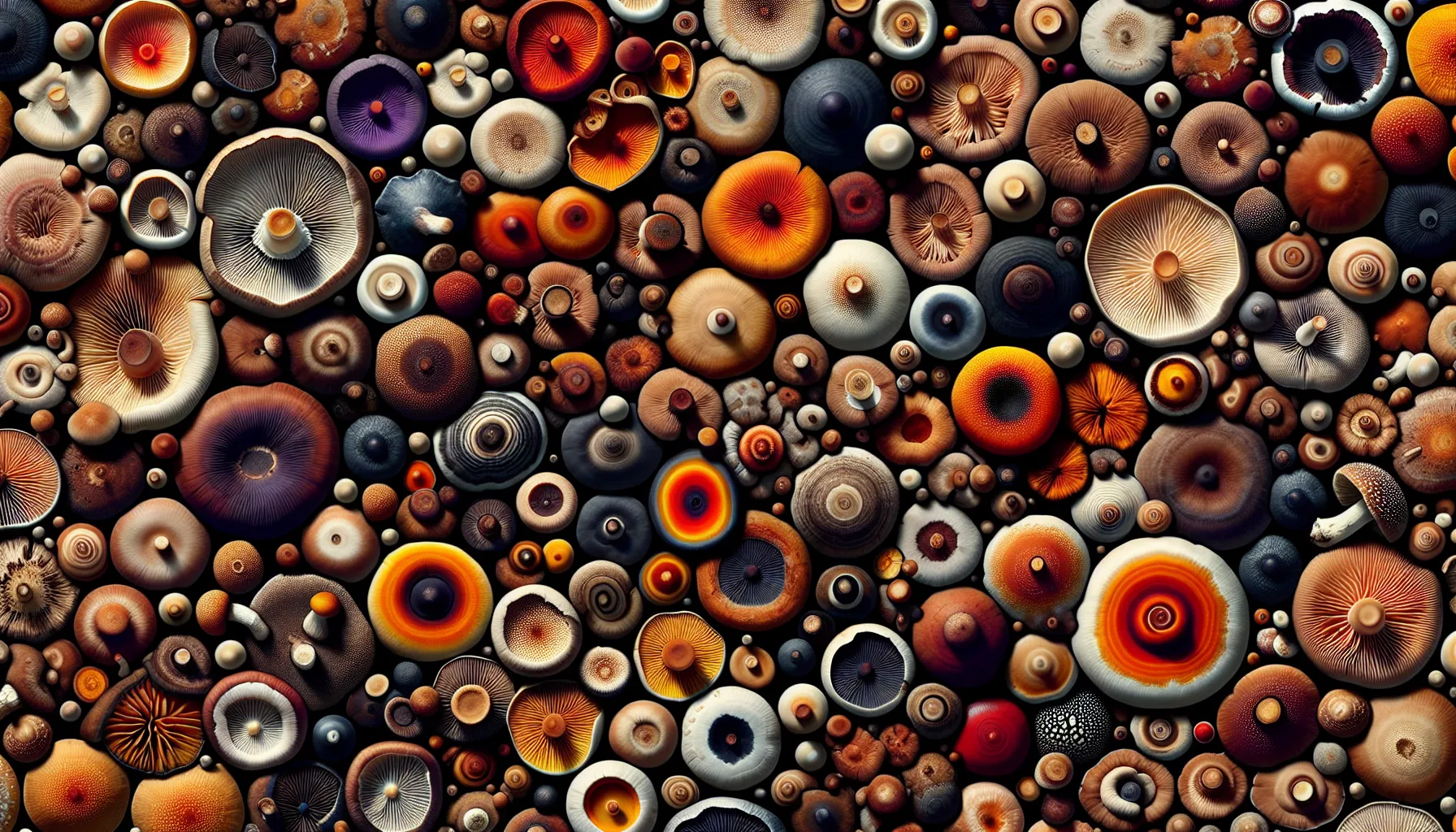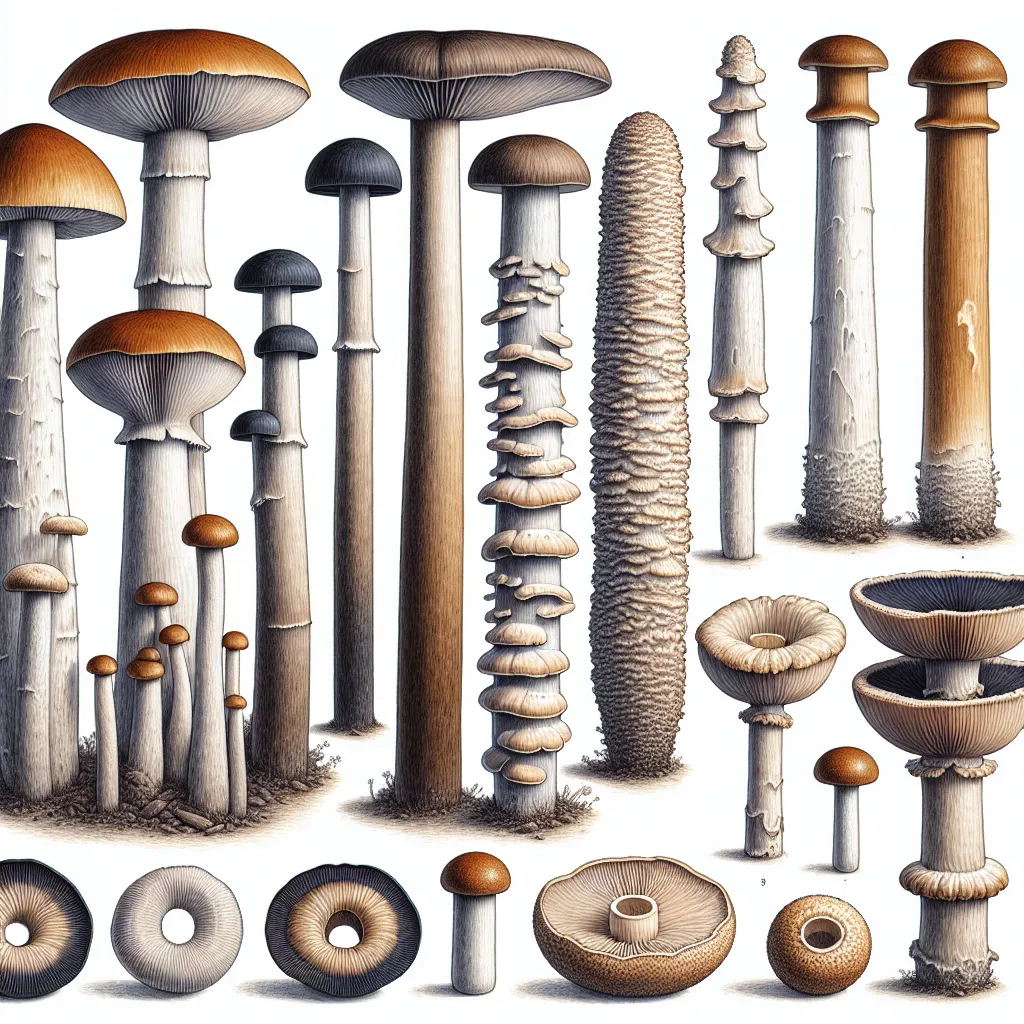Mushroom Structure: What are the Basic Parts of a Mushroom?
Mushrooms, those fascinating organisms that sprout from the earth, are a source of wonder, nourishment, and medicine. The world of fungi is vast and varied, with species that can delight the taste buds, heal the body, and even challenge the mind. Understanding the basic parts of a mushroom is not just an academic exercise; it’s a practical guide for foragers, cultivators, and anyone interested in the natural world.
The Integral Parts of a Mushroom
A mushroom is made up of several distinct parts, each playing an important role in the life cycle of the fungi. Here we delve into these parts to appreciate how they contribute to a mushroom’s growth and reproduction.
Cap: The Iconic Umbrella

The cap, or pileus, is the most recognizable feature of a mushroom. It’s the umbrella-shaped structure that comes in a palette of colors ranging from subtle browns to vibrant yellows. The cap isn’t just for show; it serves as a shield for the delicate spore-producing area beneath it. The size, shape, and color of the cap can be key identifiers when foraging or studying mushrooms.
Gills, Pores, or Teeth: The Spore Print Makers
Beneath the cap lies the gills, pores, or teeth, depending on the mushroom species. This layer is where the spores, the reproductive units akin to seeds in plants, are produced. The pattern and color of the gills or pores are also used in mushroom identification. For example, the popular Shiitake mushroom has a distinct gill structure that helps distinguish it from non-edible varieties.
Ring: A Vestige of Youth
The ring, or annulus, is a remnant of the mushroom’s veil, which breaks as the mushroom matures and the cap expands. This structure is a telltale sign of the mushroom’s growth stage and can help in identifying certain species.
Stipe or Stem: The Support Pillar

The stipe is the stem that supports the mushroom cap. It can vary greatly in length and thickness across species. In some mushrooms, the stem is central to spore dispersal, as it elevates the cap, allowing spores to fall and be carried away by the wind. The stem’s attachment to the cap is another critical identification feature.
Volva: The Birth Veil
As mushrooms emerge from the ground, they’re encased in a protective veil known as the volva. This structure eventually tears, leaving remnants at the base of the stem. The presence or absence of a volva can be a vital clue in distinguishing between edible and toxic species, such as the infamous Amanita phalloides, or death cap.
Mycelium: The Underground Network
The mycelium is a mass of thread-like cells that form the mushroom’s root system. This vast network can extend for miles underground, absorbing nutrients and water to support the growth of mushrooms above ground. The health and expansion of mycelium are crucial for the proliferation of mushroom colonies.
Fascinating Facts About Mushrooms
Mushrooms are not static; they respond and adapt to their environment. A captivating aspect of mushroom gills is their ability to reorient themselves when flipped upside down. This gravitropic response ensures that spores can still be released effectively for reproduction, showcasing the adaptability of fungi.
Beyond the Basics: The Importance of Mushroom Parts
Understanding mushroom anatomy is not just for identification; it’s also essential for cultivation and culinary use. For example, the texture and flavor profiles can vary between the cap, gills, and stem, influencing how a mushroom is prepared in dishes.
For those interested in growing mushrooms, knowledge of mushroom structure is integral. Grow kits often come with specific instructions that make more sense when you’re familiar with the parts of a mushroom.
Identifying and Foraging for Mushrooms
When foraging for mushrooms, the ability to identify different parts becomes a matter of safety. Accurate identification can mean the difference between a delicious meal and a poisonous mistake. Resources like MushroomExpert.com provide detailed information that can assist foragers in identifying mushrooms based on their structures.
Educational Resources and Further Reading
For those looking to expand their mycological knowledge, websites such as Fungi Perfecti offer a wealth of information on mushroom cultivation and the ecological role of fungi. For a deeper dive into the science of mycology, the Mycological Society of America provides access to research, meetings, and educational materials.
In summary, the parts of a mushroom are more than meets the eye. They are complex structures that play crucial roles in the life of the fungi. By understanding these components, we open the door to a richer appreciation of mushrooms, whether for culinary, medicinal, or ecological purposes.
